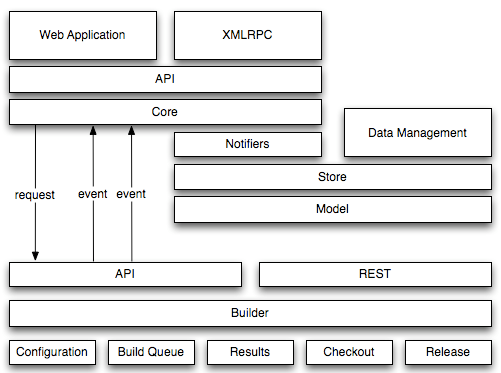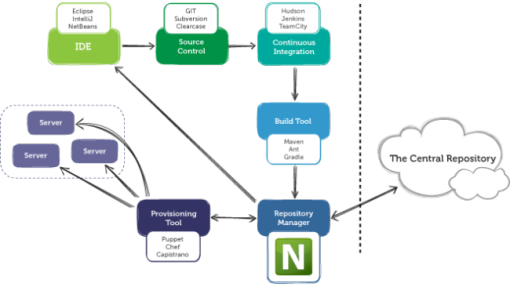As described in my previous post about Continuous Integration and its benefits now coming up to the various TOOLS of Continuous integration. Automatic build cycle is the most basic function of any Continuous Integration . There are many in the queue a few listed below.
Apache Continuum : Apache Continuum is a ready made enterprise continuous integration server with build in features like release management , source control management system. It uses Java class to access the interface and can be deployed as a stand-alone server. But before setting up for any web application we need to set the workspace for the Continuum. Java Mail 1.4, Derby DB 10.1.3 and Continuum should be deployed well before Continuum set up. Projects can be constructed simultaneously utilizing different form queues projects can be fabricated simultaneously utilizing various build queues. The supportive build tool are Maven, Ant and shell types.
Apache Continuum architecture
Jenkins : A JAVA coded service for continuous integration comes in RAR file. As a vital part of the agile system enables teams to focus on variety of environments and also supports to stream the artifact management, and deployment processes. It uses Glassfish, Tomcat as a servlet container. It also highly flexible with Ant, Gradle, or other Build Automation tools.
Benefits with Jenkins:
- Generate test reports
- Publish JUnit test results and Javadocs.
- Plugin systems can enable a wide range of features like (Mercurial, Git, Subversion, Jabber, Directory Watchers etc).
- One executor per core on the build server.
- Can push to various artifact repositories.
(Jenkins architecture)



